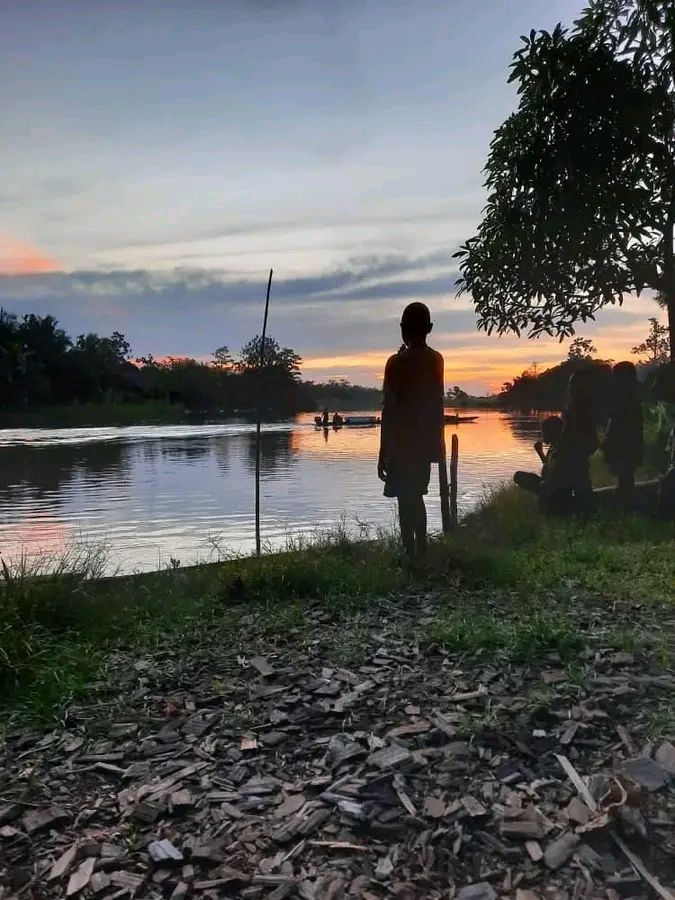
By SAUSIA WAGUN
WHEN the Ok Tedi mine was first developed in Papua New Guinea, little consideration was given to the people who lived along the banks of the Fly River.
The river was their life. It was their food. Sago grew well in the swampy terrain and was a staple.
Over the life of the mine the food, especially sago, became scarce as miles and miles of vegetation along the river died. The chemicals from the mine were carried further and further into the swamps every time there was a flood.
There was dead vegetation as far as the eye could see. Food crops – greens, watermelons, yams, swamp taro, breadfruit, tubers, cassava – all disappeared. Building materials for houses died with them.
Along the banks of the river, erosion washed tons of mud into the main river, depositing it further downstream and polluting clean waterways making the water water poisonous and undrinkable.

As a Sepik I shed tears thinking of what would happen if ever a mine was allowed to operate upstream along my Sepik River.
For two years I lived in Obo which sits at the tributaries of the Strickland (another poisoned waterway from Porgera) and Fly rivers and witnessed first-hand the hardship. I experienced it and felt the poverty and came away heartbroken, mad and completely unable to do anything.
But I had learned some important things for all of us East Sepiks to ponder upon. Let me discuss them here because they present problems I want all of us Sepiks, including Grand Chief Somare and respected leaders, to debate before allowing the Frieda Mine to operate in our province.
Landowners: The beneficiaries will not be the Sepik River people. They will become victims of development. The major landowners will be from Sandaun and the river is not their life. They do not depend as much on it as our people do.
The same was the case as Ok Tedi. While a few people up in the Star Mountains lived lavishly, spent wantonly and had the lifestyle of kings, the poor people along the river barely eked out a living.
To them poverty became an everyday thing. Starvation became an everyday thing. I remember one day walking through a village and seeing dilapidated houses with no occupants. When I asked where the people were, I was told they were at camp sites.
I did not understand what a camp site meant and my host explained they might be somewhere along the Indonesian border making sago 80-90 kms from home.
Living standards: Another thing I noticed were the houses, mostly built 20-30 years ago. The roofs and walls were rotten and the floors had holes in many places. Yet these poor people still lived inside these houses.
Building materials were distributed but, because these people need money to buy rice, the roofing sheets were instead used to build fences for crocodile farms which provided at least some form of income. Due to the dieback, all traditional building materials had virtually disappeared making it impossible for them to build and maintain their traditional houses.
Food supplies: I also realised that, to these people, it was not houses that mattered but food. It’s so scarce. You never find sago being sold in local markets. Sago is the life of every family and, after months out at the camp sites, it is brought back and rationed carefully. When it finishes, people have to paddle and trek many kilometers to the Indonesian border to camp and make sago.
Education: Most schools are empty throughout the year as the whole family is away making food to survive. As a result education standards are poor. The Ok Tedi company built permanent classrooms but all these become empty when the water level drops and food becomes a life and death issue.
It’s easy to travel as far as you can when the water level is up but when the dry season arrives and water levels drop, the situation becomes desperate. People have to get to the camp sites in time to make sago.

All the kids leave with their parents and the classrooms empty. This has affected education standards so much. I was trying to run training programs there but realised this problem before I even started.
Migration: Migration has not started for our Sepik River people yet. When the mine starts, villages along the Sepik River will become empty. That is unavoidable. People will not want to live along a dead river and experience the problems I have outlined. They will flood into our towns and we can expect socio economic problems to increase.
Health: Clean drinking water is a big issue worth mentioning. My host took me on a motorised canoe towards the Indonesian border at around 9 am and we returned at around 3 pm with supply of fresh water for a week.
It becomes desperate in the dry season and water levels drops. The water has to be boiled first. Dysentery is a common problem. There is a very acute oral health problem. Many young people have their teeth simply breaking and falling out. They cannot understand why. I blame the high level of acid in fish they eat every day.

These are the main issues. Perhaps we can organise a fact finding mission to the Fly River for our Sepik River communities. If you live amongst them for perhaps a year, you will come away completely changed.
My question about Frieda River is whether it is worth it to develop a mine which will shut down in a few years but leave terrible after effects for generations to come.
We will not only kill a river but people with unique cultures. Perhaps we are willing to sacrifice our people for money that will not directly benefit them. I do not think it is worth it.
